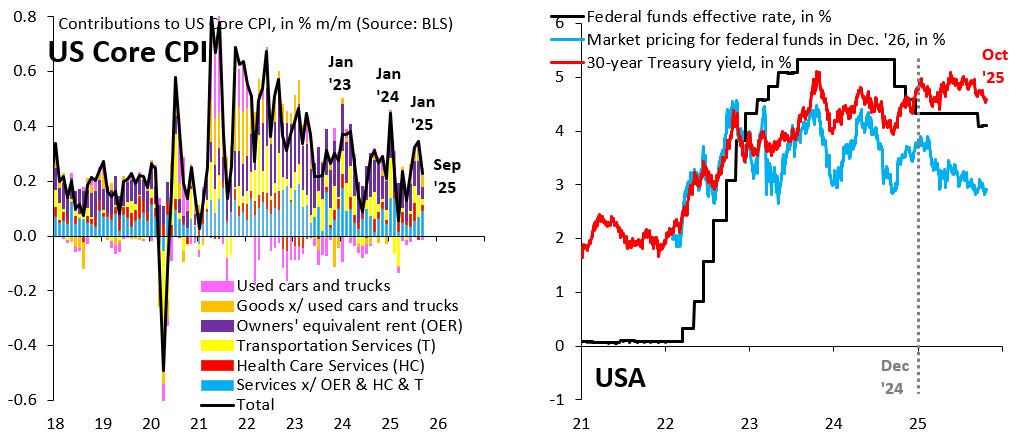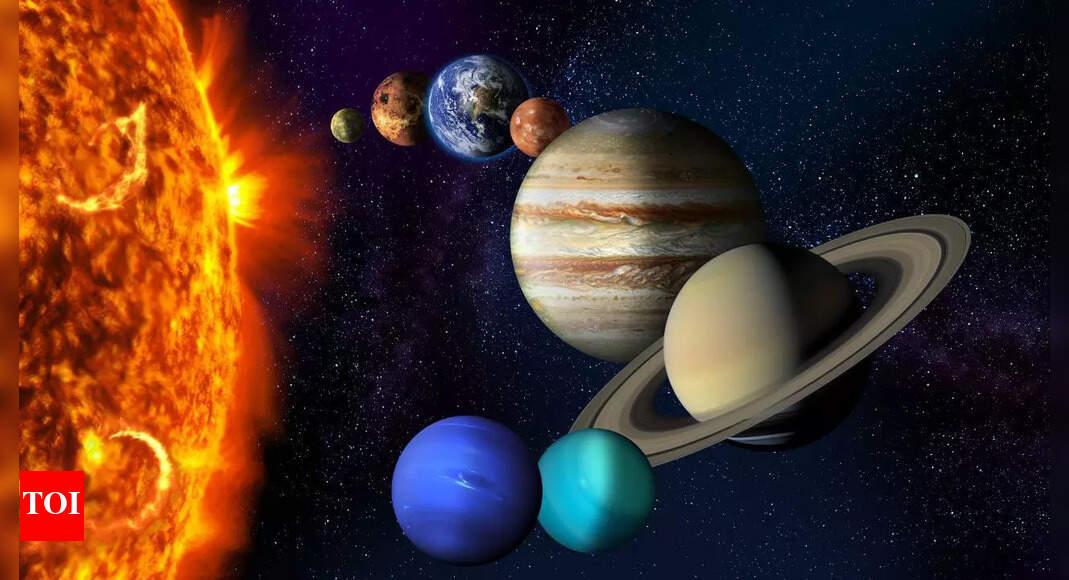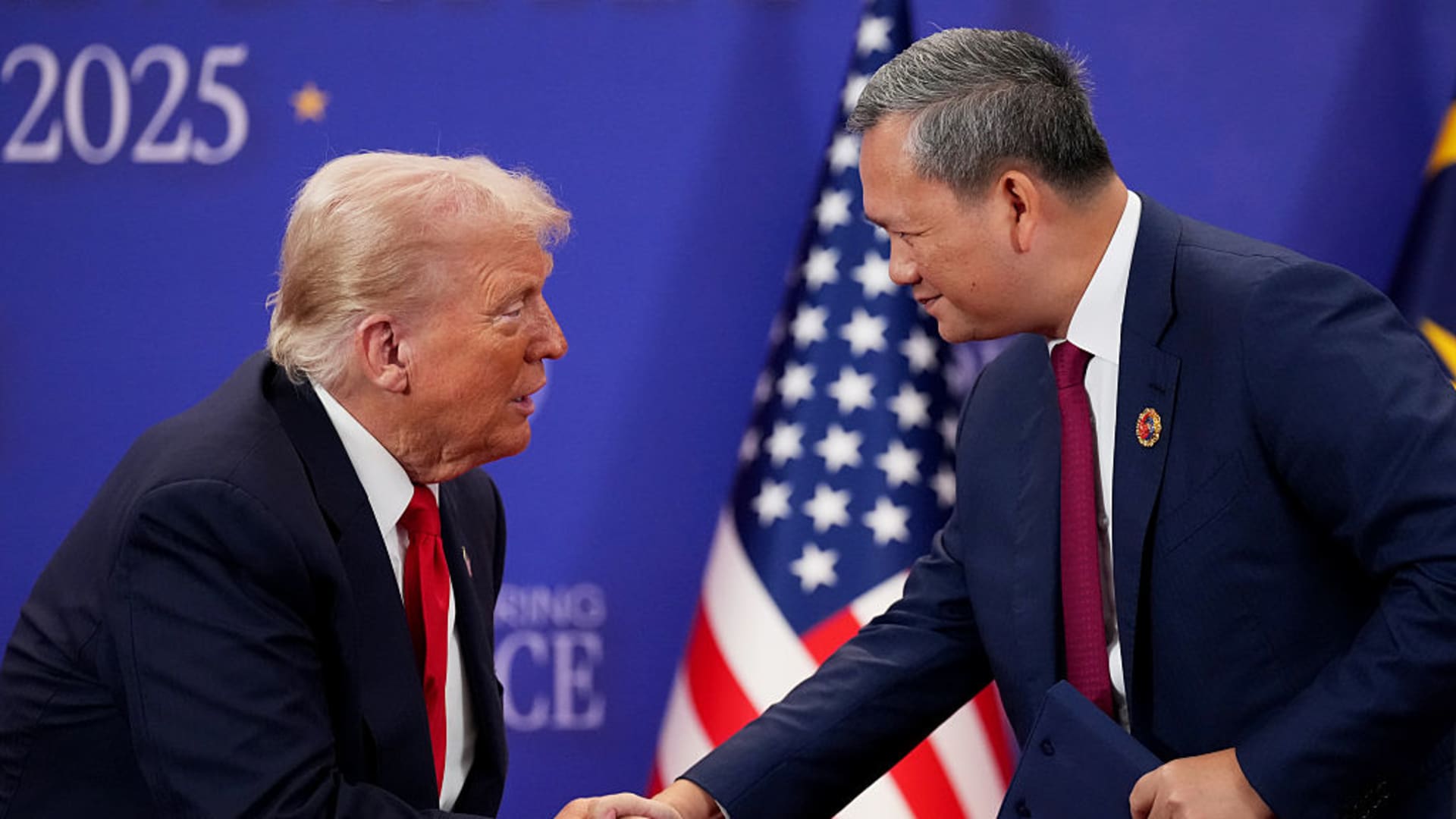LOS ANGELES – The Bruins will host UC Irvine this Tuesday evening in an exhibition game inside Pauley Pavilion presented by Wescom Financial. Game time is set for 7 p.m. (PT). Fans can watch this Tuesday’s game through Big Ten Plus (B1G+)….
Author: admin
-

No. 12 Men’s Basketball to Host UC Irvine in Exhibition Game
-

Finally See Comet Lemmon On Sunday Before It’s Gone For 1,150 Years
Topline
If you’ve not seen the two green comets yet, 90 minutes after sunset on Sunday, Oct. 26, is your last best chance before they fade. The brighter Comet Lemmon (C/2025 A6) and much dimmer Comet SWAN (C/2025 R2) are now barreling away from…
Continue Reading
-
The Sky Today on Sunday, October 26: Iapetus at inferior conjunction – Astronomy Magazine
- The Sky Today on Sunday, October 26: Iapetus at inferior conjunction Astronomy Magazine
- This Week’s Sky at a Glance, October 24 –November 2 Sky & Telescope
- See a razor-thin crescent moon line up with Mars and Mercury at sunset on Oct. 23 Space
Continue Reading
-

Where next for markets after the gold rush
Gold prices rallied hard amid the chaos of the reciprocal tariff roll-out in early April. Once that episode was over, they went into a holding pattern and stayed there until Chair Powell’s dovish speech at Jackson Hole on August 22, which unleashed a true frenzy of precious metals buying. The IMF/WB annual meetings burst that bubble and precious metals prices have gone back into the same holding pattern they went into once the April tariff shock had worn off. However, my sense is that the underlying drivers of the “debasement trade” are only getting stronger, so that will keep going.
In today’s post, I lay out how markets might evolve now that the “gold rush” of recent months has ended. Needless to say, forecasting is a dangerous business and I’ll likely be wrong on many fronts. But I feel strongly that the “debasement trade” is here to stay and will only build over the medium term. If that is true, the question then becomes where this trade will pop up next. Will it again be in precious metals, in longer-term yields, in equities or in currencies? I discuss all this in today’s post.
-
Why the “debasement trade” will build: the Fed is cutting as underlying inflation rises. The “debasement trade” is about the fear that central banks will bend to the will of politicians and monetize unsustainable government debt levels. Some of this “fiscal dominance” is already playing out in the US. The left chart below shows the drivers of monthly core CPI inflation (black line). My preferred measure of underlying inflation – what inflation is after you filter out all the noise – is the blue bars, which have trended up for half a year. That just isn’t an environment where the Fed should be cutting, let alone be in a substantial easing cycle. The blue line in the right chart below shows that markets price almost five 25 basis point rate cuts between now and the end of 2026. The fact that the Fed isn’t pushing back on this market pricing understandably raises questions about its credibility and is one reason why longer-term Treasury yields (the red line in the right chart below) remain high even as more and more Fed cuts get priced.
-
Why the “debasement trade” will build: fewer safe haven assets. I’ve been banging on about how safe haven countries like Japan or Germany are losing that status. Indeed, there are many places across the G10 where fiscal policy is unsustainable, not just in the US. This is why the Dollar was stable in the course of the precious metals rally in recent months, as the blue line in the left chart below shows. The debasement trade isn’t about the US, it’s about a much broader loss of confidence in fiat currencies. The Japanese Yen would have been a key place to hide in the past, but the blue line in the right chart below shows that’s tumbling against the Dollar. The safe havens of today are Switzerland (black line), Sweden (red line) and Norway (orange line). Unsurprisingly, these are places where government debt is low because fiscal policy hasn’t become unmoored.

-
Where will the “debasement trade” pop up next? Precious metals are back in the same holding pattern they were in after the April tariff shock wore off. Longer-term bond yields are in a similar holding pattern as markets price more and more rate cuts for G10 central banks, which is pulling long-end yields down for now. Perhaps the best “debasement trade” currently is the S&P 500, which is up over 15 percent so far this year. President Trump frequently looks to the stock market as validation of his policies. The S&P 500 won’t be allowed to fall. What will also not fall is the Dollar, which – as the left chart below shows – has been stable since its sharp fall in April. So much “bad news” is priced into rate differentials, which have moved massively against the Dollar, that the only way for the greenback is up. Indeed, over the past few weeks, I’ve heard more and more talk of a return of “US exceptionalism.” Sentiment on the Dollar is changing for the better.

Continue Reading
-
-

Shockwaves in Pakistan cricket! PCB to sack national head coach after Women’s World Cup disaster | Cricket News
The Pakistan Cricket Board (PCB) has decided not to renew the contract of women’s national team head coach Muhammad Wasim following a disappointing…
Continue Reading
-

Earth on high alert: Solar storm that devastated Venus could hit us next |
The Sun has been busy again, and this time, its outburst struck Venus first. A powerful solar storm recently slammed into the planet, shaking its thin atmosphere and sending ripples through…
Continue Reading
-

Is Prince Andrew being ‘evicted’?
Is Andrew being encouraged to leave his home? Picture made with AI The pressure is not letting up on Prince Andrew and on Friday, it was reported the disgraced prince is in talks to leave his home, Royal Lodge. After questions were asked in…
Continue Reading
-

Eurogamer Weekly Digest, 26th October – highlights you might have missed this week in features, reviews, and news
And here we are again; seven days older, seven days wiser, and if you were silly enough to watch that VHS tape, seven days to die. That means we’re back with another Weekly Digest – in which we recap some of the highlights…
Continue Reading
-

‘Do you know Princess Diana also had an eating disorder?’: Namita Thapar admits to struggling with ‘stress eating and yo yo weight’ for years | Health News
Namita Thapar recently took to Instagram to reveal that she “struggled with stress eating and yo yo weight for years”. However, she has been able to keep it check these last 5 years, using the techniques of motion, relation and passion….
Continue Reading
-

Trump Asia trip, ASEAN summit
U.S. President Donald Trump and Cambodian Prime Minister Hun Manet shake hands during the signing of a Cambodia-Thailand peace deal at Kuala Lumpur Convention Centre on October 26, 2025 in Kuala Lumpur, Malaysia.
Andrew Harnik | Getty Images News…
Continue Reading